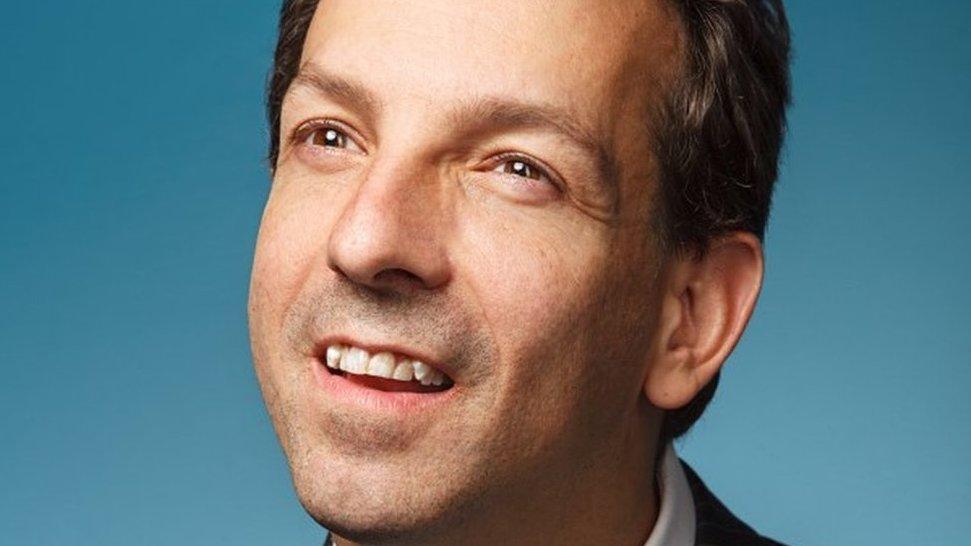Tech Tent: Making tech work for everyone
- Published

Stream or download, external the latest Tech Tent episode on the BBC website
Listen to previous episodes on the BBC website
Follow Tech Tent, external on Twitter

This week we devote the whole of Tech Tent to a special programme on assistive technology - that's tech to help disabled people take advantage of all the advances we've seen in recent years.
We look at a new gadget which helps blind and visually impaired people read text and recognise faces, we talk to a tech giant about its progress in making software more accessible, and we ask what role AI could play in opening up technology for everyone.
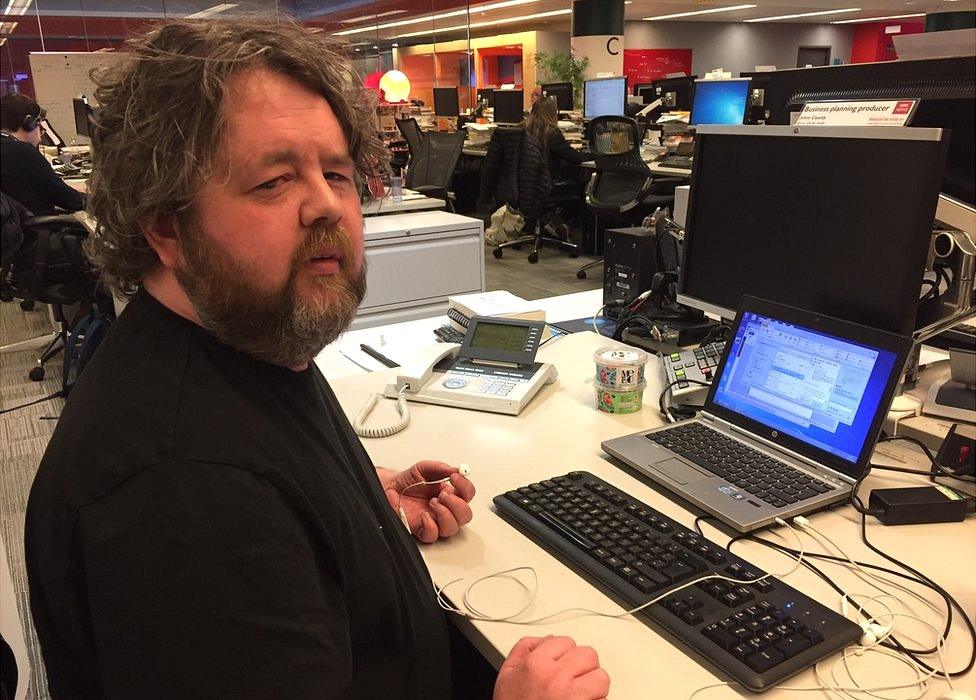
The BBC's Johny Cassidy began to lose his eyesight when he was in his teens
Orcam - a new way of seeing?
We are joined on the show this week by Johny Cassidy, a producer in the BBC's Economics Unit who has masterminded the Disability Works series across our TV, radio and web output this week.
Johny lost his sight as a teenager and for the programme he tried out a new gadget called Orcam. It consists of a camera which you clip onto a standard pair of glasses and a separate unit which provides an audio description of what the device is seeing.
The idea is that you can point it at text and it will read it or it can be programmed to recognise faces. This was the feature which worked best - it quickly recognised me and producer Jat Gill when we stood next to each other, reading our names out to Johny.
This impressed him, but the text readout proved very clunky and slow. Johny showed us the technology he uses every day to work on a computer, a screen reader system which allows him to sort through his emails and scan online articles at breakneck speed.
It seems evident that Orcam, priced at a hefty £2300, is trying to solve a problem that is already being addressed far more efficiently in software - but perhaps it will improve over time.
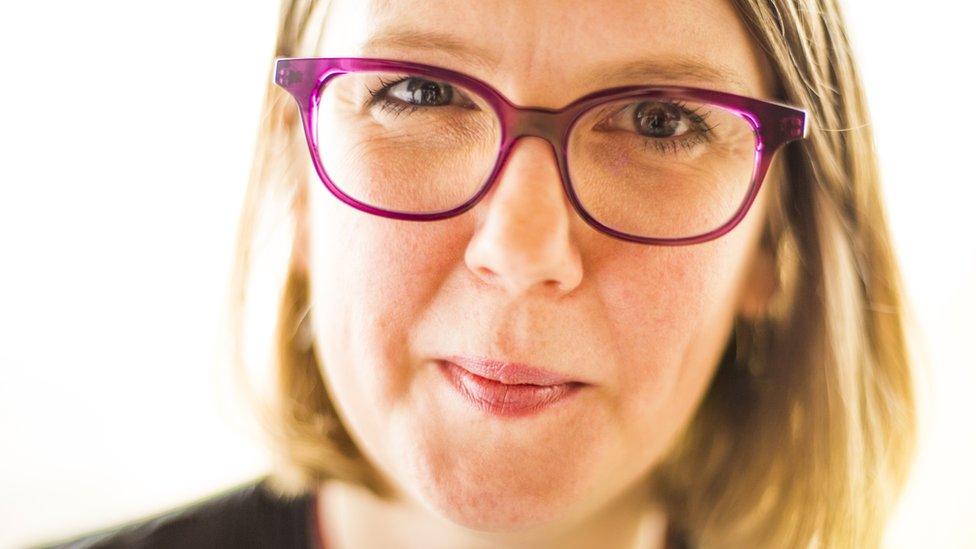
Jenny Lay-Flurrie is working to make Microsoft's software more inclusive
Microsoft's accessibility plan
When he took over as chief executive of Microsoft, Satya Nadella made it clear that accessibility was going to be a priority - an admission perhaps that the company hadn't been moving quickly enough. Key to that was the appointment of a new chief accessibility officer Jenny Lay-Flurrie.
She tells us that, with an unemployment rate for people with disabilities in the United States twice the average, there is much to be done. The screen reading technology which we saw demonstrated by Johny Cassidy is going to get more upgrades and she described an accessibility checker built into Office that allows users to check that the documents or presentations they send can be read by anybody.
Jenny, who is profoundly deaf, talked to us in our London studio from the West Coast of the United States and I was curious about how that worked. She explained that a colleague was listening into the call from another part of the US and sending her the text of my questions.
At the moment, she has an interpreter who often accompanies her to meetings, but she's trying out new technology such as real-time captioning in Skype. And she points out that some ideas you might think were developed for people with disabilities, like subtitling on web videos, are now being used by everyone.
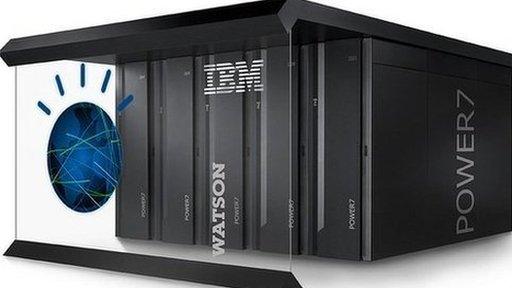
IBM's Watson supercomputer is changing how we interact with machines
AI and Accessibility
Much of the progress made recently in artificial intelligence has been about teaching computers to see, hear and understand in the same way as humans do. That is changing the way we all interact with computers - we can talk to them, and they are beginning to understand our facial expressions, making them more accessible to everyone.
That is the message we hear from IBM's Dr Guru Banavar, the man guiding the Watson AI project. "That's going to be the game changer with AI," he says. "Machines have to be natural with people see and hear like people do."
Technology used to be a big barrier for disabled people hoping to thrive in the workplace - but in the future it could augment human capabilities, making working life easier for everyone.

Stream or download, external the latest Tech Tent episode on the BBC website
Listen to previous episodes on the BBC website
Follow Tech Tent, external on Twitter
- Published22 February 2017
- Published22 February 2017
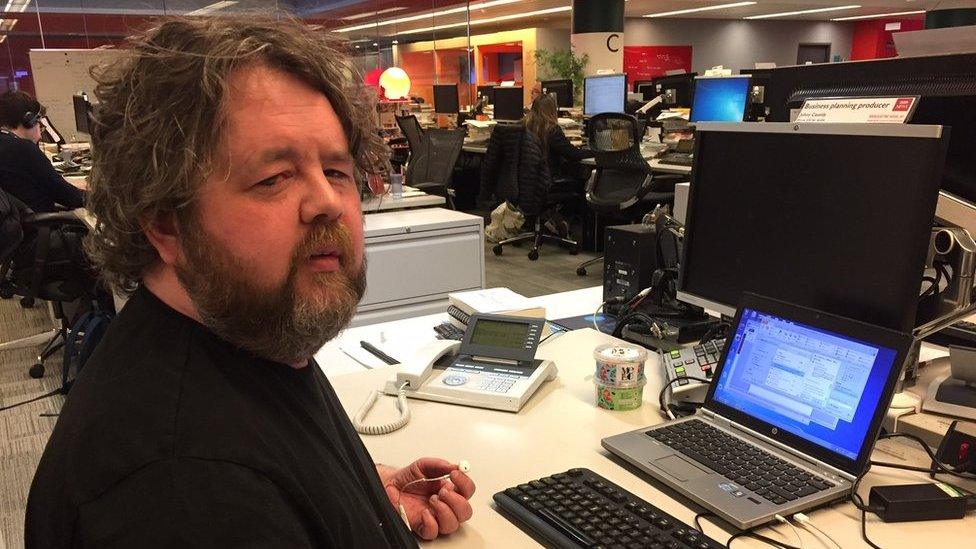
- Published21 February 2017
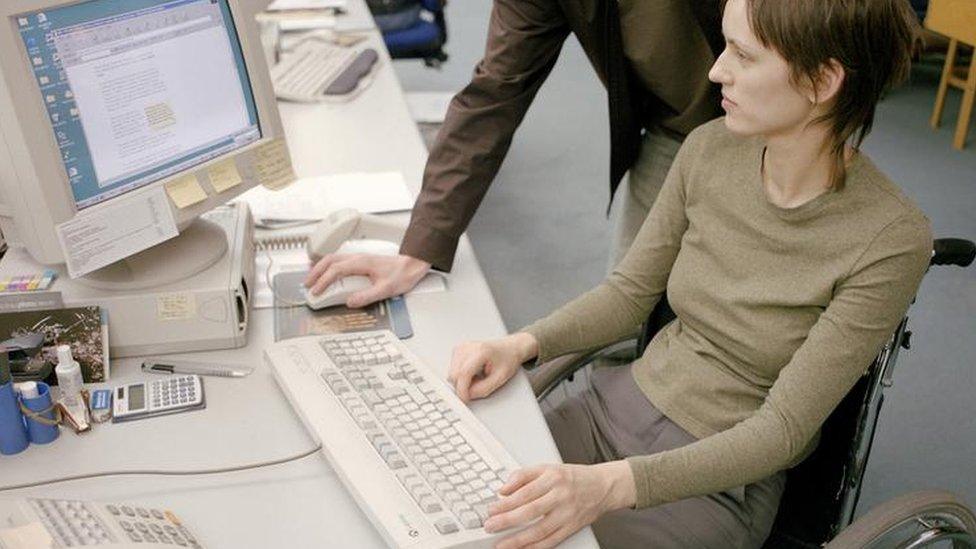
- Published23 February 2017
